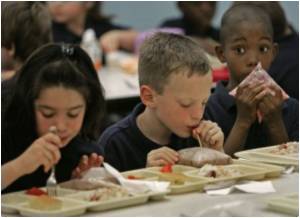Both in the United States and across the globe, much attention has been focused on school meals.

Data were collected from three schools in Sweden for children 6 through 12 years. Observations of the meals (25 hours total) were combined with observation of the cafeteria itself, interviews with kitchen staff, and focus groups with children. Three types of teacher were found: the sociable teacher, the educating teacher, and the evasive teacher. There were two types of sociable teacher, namely, one that had adult interests to discuss and another that was more oriented towards the children. Similarly, the educating teacher could be more adult-oriented and authoritarian or more child-oriented and dialogue-directed. Teachers seemed more involved with the younger children than the older children.
This research provides a useful tool for researchers and practitioners to clarify best practices for teacher-student interactions during mealtimes, and moves beyond what should be done to how it should be done. Being able to provide feedback to teachers on how to interact informally but constructively with students will help improve the school nutrition environment. This research may have implications for parental reflection during mealtimes as well.
Source-Eurekalert















